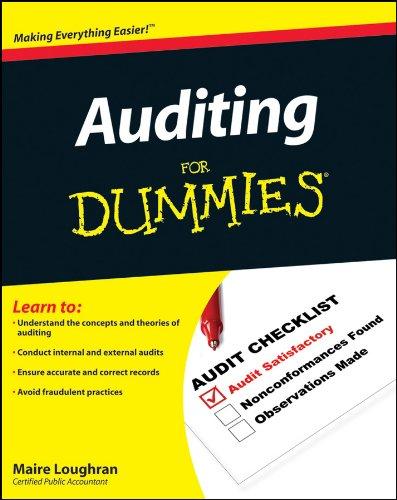Question
1) Dick Jones, a single taxpayer, had $70,000 in taxable income before personal exemptions in the current year. Jones had no tax preferences. His itemized
1) Dick Jones, a single taxpayer, had $70,000 in taxable income before personal exemptions in the current year. Jones had no tax preferences. His itemized deductions were as follows:
State and local income taxes $5,000
Home mortgage interest on loan to acquire residence 6,000
Miscellaneous deductions exceeding 2% of AGI 2,000
What amount did Jones report as alternative minimum taxable income before the AMT exemption?
a. $72,000
b. $83,000
c. $75,000
d. $77,000
2) The alternative minimum tax (AMT) is computed as follows:
a. Excess of the tentative AMT over the regular tax.
b. The tentative AMT plus the regular tax.
c. Lesser of the tentative AMT or the regular tax
d. Excess of the regular tax over the tentative AMT
3) Which of the following may not be deducted in the computation of alternative minimum tax of an individual?
a. Traditional IRA account contribution
b. Charitable contributions
c. Personal exemptions
d. One-half of the self-employment tax deduction
4) Martin, a calendar-year individual, files a Year 1 tax return on March 31, Year 2. Martin reports $20,000 of gross income. Martin inadvertently omits $500 of interest income. The IRS may assess additional tax up until which of the following dates? a. March 31, Year 8 b. April 15, Year 8 c. April 15, Year 5 d. March 31, Year 5
5) Dawn Smith's adjusted gross income on her Year 1 tax return was $100,000. The amount covered a 12-month period. For the Year 2 tax year, the minimum payments required from Smith to avoid the penalty for the underpayment of estimated tax is:
a. 90% of the current tax on the return for the current year in four equal installments or 100% of the prior years tax liability paid in four equal installments
b. 90% of the current tax on the return for the current year in four equal installments or 110% of the prior years tax liability paid in four equal installments
c. 110% of the prior years tax liability paid in four equal installments only
d. 100% of the prior years tax liability paid in four equal installments only
6) How may taxes paid by an individual to a foreign country be treated?
a. As an itemized deduction subject to the 2% of AGI floor
b. As an adjustment to gross income
c. As a non-deductible expense
d. As a credit against federal income taxes due
7) Which of the following statements about the child and dependent care credit is correct? a. The child must be under the age of 18 years b. The maximum credit is $600 c. The child must be a direct descendant of the taxpayer d. The credit is non-refundable
8) An employee who has had social security tax withheld in an amount greater than the maximum for a particular year may claim: a. Such excess as either a credit or an itemized deduction, at the election of the employee, if that excess resulted from correct withholding by two or more employers b. The excess as a credit against income tax, if that excess was withheld by one employer c. Reimbursement of such excess from his employers, if that excess resulted from correct withholding by two or more employers d. The excess as a credit against income tax, if that excess resulted from correct withholding by two or more employers.
9) Which one of the following statements concerning the American Opportunity Credit is not correct? a. The credit is available for the first four years of post-secondary education b. The credit is available on a per student basis c. To be eligible for the credit, the student must be enrolled full-time for at least one academic period during the year d. If a parent claims a child as a dependent, any qualified expenses paid by the child are deemed to be paid by the parent
10) Which one of the following statements concerning the Lifetime Learning Credit is not correct? a. The credit is 20% of the first $10,000 of qualified tuition and related expenses b. qualifying expenses include the cost of tuition for graduate courses at an eligible educational institution c. The credit may be claimed for an unlimited number of years d. The credit is available on a per student basis
Step by Step Solution
There are 3 Steps involved in it
Step: 1

Get Instant Access to Expert-Tailored Solutions
See step-by-step solutions with expert insights and AI powered tools for academic success
Step: 2

Step: 3

Ace Your Homework with AI
Get the answers you need in no time with our AI-driven, step-by-step assistance
Get Started


